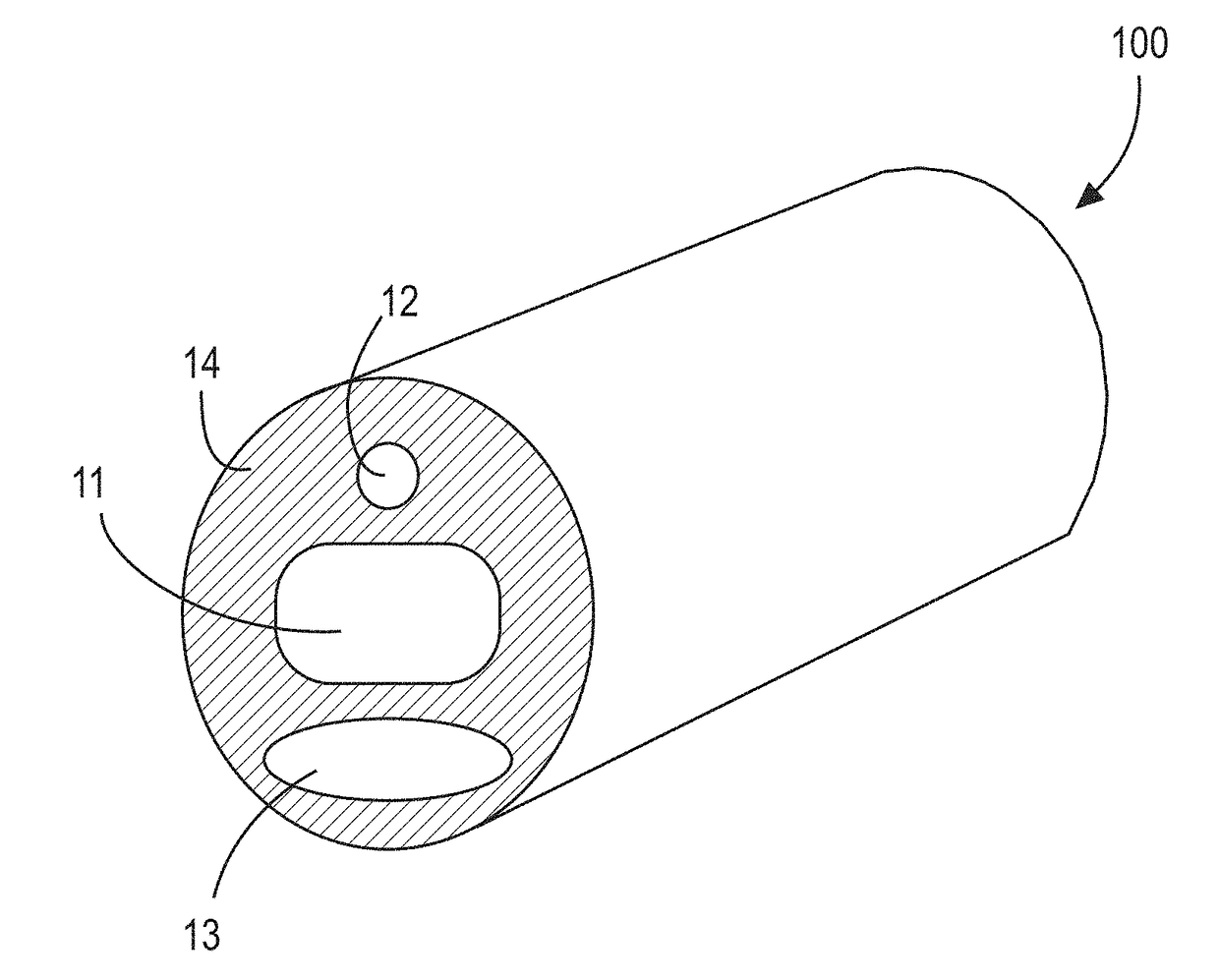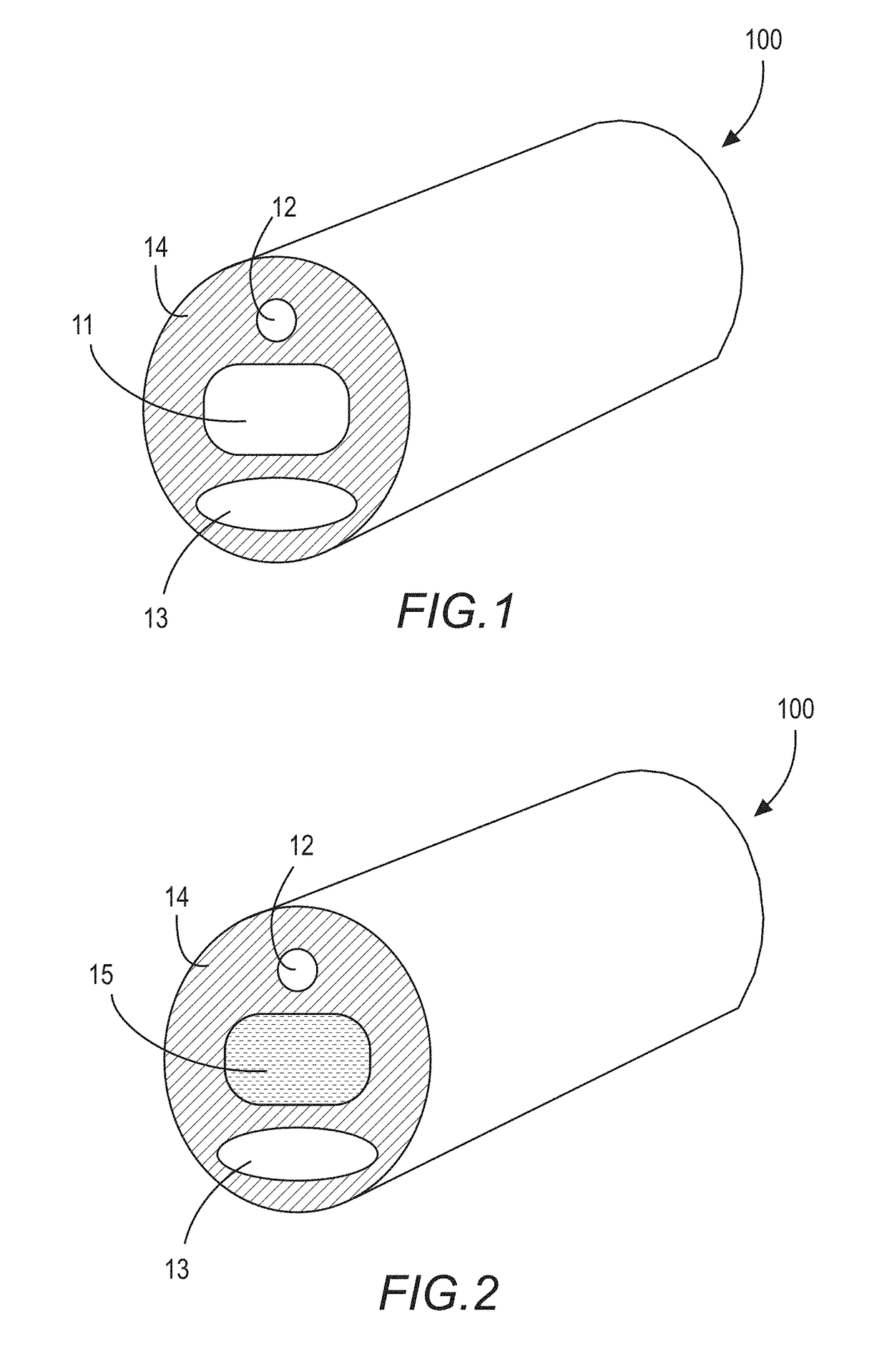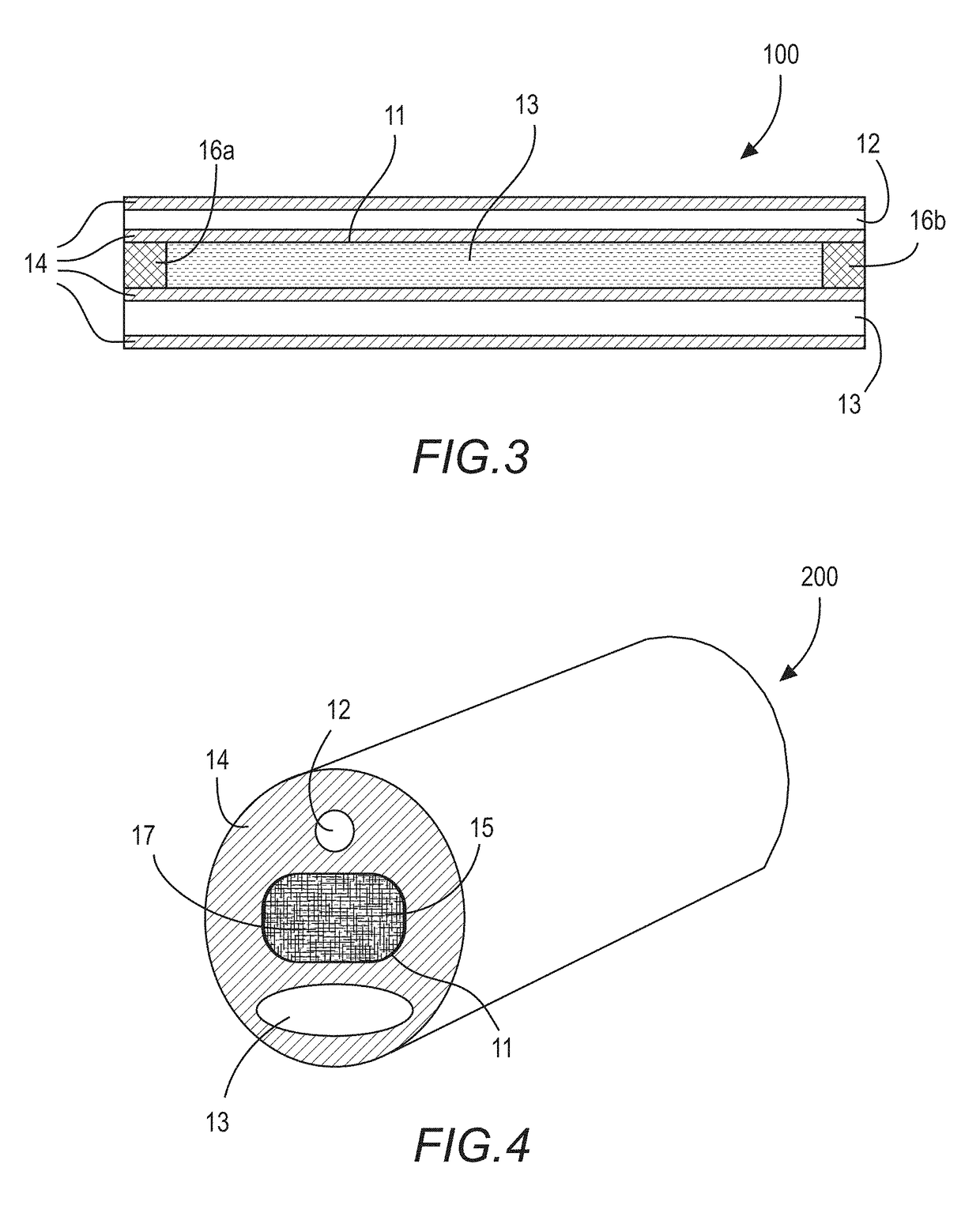Medical products and methods configured for controlled release of nitric oxide
- Summary
- Abstract
- Description
- Claims
- Application Information
AI Technical Summary
Benefits of technology
Problems solved by technology
Method used
Image
Examples
example 1
[0035]Turning now to the drawings, and in accordance with a first embodiment, an improved catheter being configured for anti-microbial and anti-thrombogenic treatment is disclosed.
[0036]FIG. 1 shows a cross-section of a water-permeable tubular medical device 100, such as, for example, a tubular portion of a Foley urinary catheter, with at least a first lumen 11, a second lumen 12, and a third lumen 13. Each of the first thru third lumens are disposed within a water-permeable transport medium 14. The first lumen is sealed at the terminal ends (See FIG. 3) to define an enclosed reservoir or “cavity”. Accordingly, as it relates to this illustrated embodiment, the first lumen 11 may also be referred to as a “cavity 11”.
[0037]FIG. 2 shows the medical device 100 of FIG. 1 with the addition of a nitric oxide donor material 15 contained within the cavity 11. Here, the cavity 11 is a lumen-type cavity (“first lumen”) extending along a length of the catheter; however, one with skill in the ar...
example 2 — pad
Example 2—Pad
[0051]In another embodiment, as illustrated in FIGS. 5-7, a medical device may take the form of a pad 300. The pad generally includes a transport medium 314 forming an enclosure around an inner cavity 311, wherein the inner cavity is filled with or otherwise comprises a nitric oxide donor material 315. Properties such as composition and thickness of the transport medium are selectively implemented to allow for permeability of water (moisture) into the cavity and nitric oxide out of the cavity.
[0052]The pad may comprise a flat contour 318 at the delivery side, or other contour for engaging an anatomical feature of a patient. The pad may be implemented as a medical dressing, wound healing pad, bandage, or other pad device as conventionally provided in the art.
[0053]Additionally, a thickness of the transport medium at the delivery side of the pad can have a second thickness 314b that is less than a first thickness 314a associated with the rest of the pad.
[0054]As shown in ...
example 3
se Pad
[0060]In another embodiment, a multi-phase pad is disclosed. The multi-phase pad is configured to support wound healing by providing different agents and factors over time.
[0061]In an experiment, different dressing formulations containing a variety of ratios of SNAP, silicone, and optionally collagen (Type IV) were evaluated for NO flux over a 5-7 day interval. NO released from sample bandages was assessed via chemiluminescence at body temperatures (37.5° C.) in 10 mM PBS (pH 7.4, containing 100 μM EDTA) using the Nitric Oxide Analyzer (NOA) 280i (Boulder, Colo., USA) that measures NO release by placing the samples in a clear glass sample vessel elevated above a shallow reservoir of PBS buffered solution purged with a nitrogen gas bubble solution. In the cell vacuum, water vapor should contact the bandage solution without need. This setup was employed to simulate water vapor emanating from the dermal or wound surface. Samples reach a plateau nitric oxide release value within t...
PUM
| Property | Measurement | Unit |
|---|---|---|
| Wavelength | aaaaa | aaaaa |
| Wavelength | aaaaa | aaaaa |
| Permeability | aaaaa | aaaaa |
Abstract
Description
Claims
Application Information
 Login to View More
Login to View More - R&D
- Intellectual Property
- Life Sciences
- Materials
- Tech Scout
- Unparalleled Data Quality
- Higher Quality Content
- 60% Fewer Hallucinations
Browse by: Latest US Patents, China's latest patents, Technical Efficacy Thesaurus, Application Domain, Technology Topic, Popular Technical Reports.
© 2025 PatSnap. All rights reserved.Legal|Privacy policy|Modern Slavery Act Transparency Statement|Sitemap|About US| Contact US: help@patsnap.com



